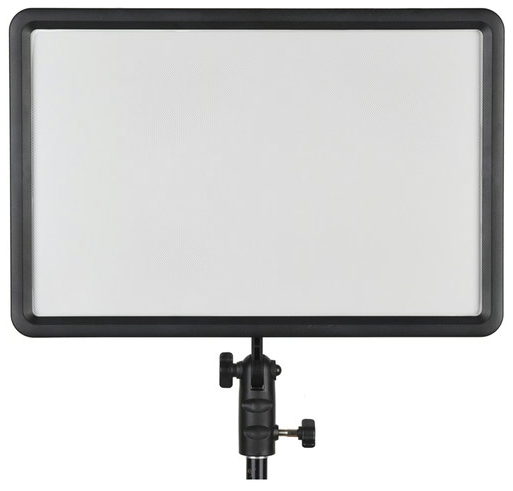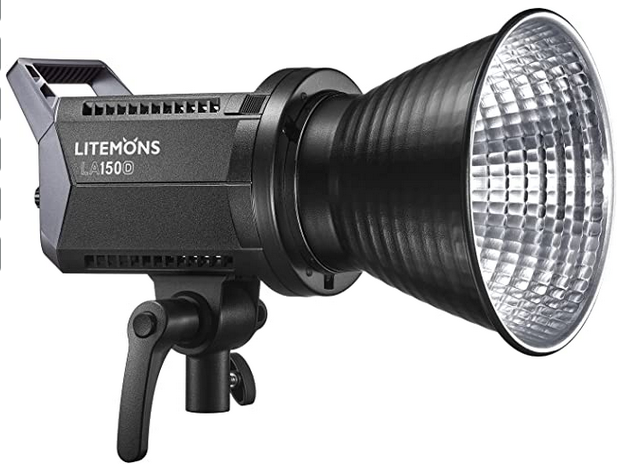Tips for Buying and Using LED Lights
/Godox LEDP260C - A decent LED PANEL putting out 550 LUX
Hello neighbours. This time I want to drill into the subject of continuous LED lights for photography and for videography
One of the reasons that we choose any kind of supplied light is to give us control of the three constituents of lighting, which are quality, direction and colour
Quality
This is a rather loose description of how hard or soft the light is on the subject. Hard shadows indicate hard light, whereas soft shadows or minimal shadows indicate soft light. Quality is controlled by how large the light source is relative to the subject. The closer to the subject, the larger any source becomes relative to the subject and thus the light becomes softer.
Direction
Direction is simply the direction that the light is coming from relative to the subject. Direction can control whether the lighting appears flat, defines texture, creates a split image or a silhouetted image.
Colour
Colour is simply the colour of the light source. While measured in degrees Kelvin for specifics, generalizations are also common, to say a warm light is slightly yellowish or orange or a cool light tends to blue. Our descriptors work for what our eyes see and brains interpret, however these descriptors are the opposite of actual colour temperature. We might call 3400K warm and 7000K cool, yet in reality, you can see by the temperature numbers that 7000k light is considerably hotter than 3400K lighting. This contradiction of how we see and interpret causes immense confusion for many.
LED Lights
There are three defining factors for light in an LED light. When we think of quality, we are really talking about the size of the source which may include the number of individual LEDs on an LED panel. The larger the panel, the more LEDs and therefore the softer the light at a given distance to a subject. Single LED tools like a Lumecube have only one tiny source and when used as the dominant light source is very hard. A panel at the same distance from the subject with 400 LEDs is going to be much softer if the Lux value is the same.
When we talk about direction, we are really talking about how easy it is to move and place the panel, which pulls into question what other equipment is required to place the panel where you want it. Often the support infrastructure is larger and more cumbersome than the panel itself.
When we talk about colour we talk about the colour temperature of the light. When considering an LED light, the choice is one with variable colour temperature or one fixed at daylight. The variable range is commonly between 2700K and 6000K which means that if you are mixing light sources and have a colour meter you can match colours. If a single light is your dominant source by at least three stops a panel that only does daylight (5600K) is perfect. Also in this area comes the metric of CRI which is a measure of consistency in colour fidelity. CRI is self-assigned by makers so I would say that it is not always a consistent or even accurate metric, particularly on really cheap LED panels
Placement
An LED light is typically not going to be a self supporting thing. You will need a stand of some kind for it. Small panels, often sold as on camera video lights will have either a cold foot mount or a 1/4-20 tripod mount. Some provide a cold foot that is also tapped 1/4-20. Larger lights will have a mount system that accepts a standard 5/8” light stand stud. The light will determine the type of support needed. If a 1/4-20, small table top tripods can work fine, because the weight of the panel is small. Larger lights will require larger stands, and perhaps booms if you want to get the light up and over a subject. Get the right stand for your light and always err on the side of bigger. If using a boom, you must place weights on the stand so it will not tip, and if the boom is long, also add a counterweight to the boom. While you may not care about safety at home, it’s not optional when working anywhere else or where the subject has any tangible value. A camera tripod can be used as a light stand with a 1/4-20 hole tapped in a 5/8” stud. These adapters are readily available from any good camera store or even on Amazon. Note that using a tripod as a light stand is not optimal because of the need to spread the legs wide.
Output
LED lights look super bright and hurt your eyes if you stare into them. Many people then conclude that they are in fact putting out a lot of light. They are not. You don’t stare into the sun to determine its brightness and so you also cannot trust your eye / brain combination when it comes to an LED light. A small hot shoe type flash hits much harder and brighter than an LED light. For this reason when choosing an LED light for photography and or videography you want as much power as you can afford in a size that fits your needs.
Sadly there is no simple to understand consistency when it comes to how vendors measure and market things. You will see terms like LUX, Candlepower and Lumens and they all are measured differently and mean something different. This can make comparison shopping challenging.
Any decent LED light maker will advise the Lux rating. Lux are measured at a specific distance from the panel, typically 1 meter. Let’s say that you are accustomed to a 100 watt incandescent lightbulb in terms of brightness. We would all agree that unless the light is right on top of the subject that this is not very bright. This is roughly equivalent to a panel driving approximately 500 Lux at distance of 1m. Also not very bright. So we want to look for a light that can approximate the output of at minimum an old 250w photoflood. This would mean that we would be seeking a light rated at approximately 1200 Lux. The Godox LEDP260C panels that I often use are only 550 Lux so I need three of them to get the equivalent light of just one 250w photoflood!. You also have to be careful with some ratings as they can be self assigned. An example is the Lume Cube 2.0 which specs at 750 Lux at 1m. There is a harshness issue here, but that does sound nice and bright. The challenge is that independent testers consistently rate it at about 300 Lux which is still quite incredible for such a tiny battery powered device.
As we understand the inverse square law in the example of one of those Godox panels, if I increase the light to subject distance by 1 more metre, by doubling the distance the panel ends up delivering about 130 Lux on subject. This means longer shutter open times, or higher ISO or both, than I would get with flash. This is not specific to that light, it is true for all lights of any type.
Flash is of no use for video, and many people do not like flash because they cannot preview how it will look until they make the shot. Thus if you will go to LED panels, and there are lots of reasons to do so, consider going to the highest output panel that you can find. Watch out for Lumens ratings, because they are a measure of efficacy of the source at source. You could have two different panels of the same size and LED count with very different Lumens ratings. We can use lumens as a means of comparison with incandescent bulbs but it’s not nearly as useful when considering lighting for photography or video as Lux is.
Buying Your Led Light
There are two predominant routes for selecting an LED light. LED panels can offer decent brightness at a very low price and because they can come in a larger panel diameter tend to negate the need for further light shaping tools. They can also be lighter and easier to transport. A dedicated LED light that delivers much higher output tends to look like a strobe style flash. For example, the LED lights in the Godox LA family look and handle like strobes. The LA150D retails for about $280 but instead of perhaps 5000 Lux in a panel pushes nearly 90,000 Lux at full power. The light is pretty hard with the basic reflector, but you can use ANY Bowens S Ring mount light shaper with this light. The downside is bulk and space required. It’s heavier, takes more space, is longer back to front even without a light shaper, and a light shaper will consume even more space.
GODOX Litemons LA150D Studio type led light. Puts out about 84,800 lux
In that regard it is user’s choice. It is more likely that will find variable colour options in light panels than in studio style lights which are typically fixed at 5600K (daylight). I find most of the so called variable colour are actually bi-color which means half the LEDs are 2700K and half are 5600K, so what you get is some blend of each. That means less actual power on the subject if you choose 5600K or 2700K Thus you have to consider your use case. Are you trying to have your LED light be the dominant source, or a fill? If dominant, seek out a light without colour temperature variability.
Summary
The wonderful thing about continuous LED lights is that what you see is what you get. You can set your camera to Automatic White Balance and be good to go. You can see the change in light effect and exposure by moving the light. No calculator or math required. The exposure that your camera proposes is likely to be right on the first frame. Of course to be sure, take a spot meter reading off a grey card where the subject will be, set it and forget it. Spend less time fussing and more time shooting. Videography tends to need a bit less light on subject because of its effective use of higher ISOs when framerate is considered so I find a panel is a good choice there. For still photography, unless I am doing some really tight closeup work, I prefer the strobe style LED light that can use from my wide collection of light shapers and still have decent power on subject and not have to have the light right on top of the subject. Choose according to your use cases and you will be in great shape!.
Thanks for reading! If you do shop with B&H Photo Video, please do so through the link on the page. It costs you nothing more, and pays me a tiny commission that adds up over time. Cheers and until next time, peace.










